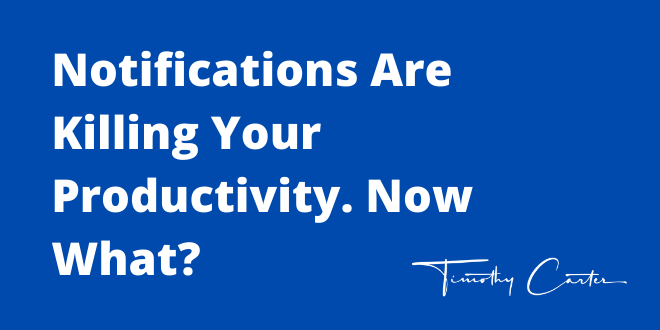
What Makes a Landing Page Effective?
July 6, 2022
How to Write Better Landing Page Copy for Your Startup
July 21, 2022After launching a new startup, you’ll be interested in growing the business as quickly as possible, thus generating more revenue, securing more stability, and improving your reputation as well. But one of the secrets to effective scaling is an efficient team; if your employees are working productively and consistently, they’ll be capable of making your vision a reality. But if they struggle to get their work done, for one reason or another, you might fall into a place of stagnation.
What Makes Employees Productive in a New Startup?
So what is it that makes employees productive in a new startup? And how can you improve these conditions?
The Productivity Problems With Startups
Every business has potential productivity woes, but startups have some special issues unique to them, including:
1. Limited budgets.
When starting a business, you’re usually working with a limited budget. You don’t have much revenue being generated (if any at all), and you may have a strict or finite source of capital to fund the hiring of new employees.
This makes it difficult to find experienced, talented people, restricts the number of people you can hire, and makes the loss of an employee all the more devastating.
2. Uncertainty.
There’s also a lot of uncertainty within a startup. You may have a descriptive, thorough business plan to serve as the blueprint for the present and future of your organization – but there’s no guarantee it’s going to pan out the way you think.
To survive, startups must flexibly accommodate new changes and circumstances, and that means putting employees in a difficult position.
3. Experimental workflows.
You can devise a streamlined, efficient workflow from scratch – but there’s no guarantee the “practice” is going to match the “theory.” For example, you might have an efficient workflow in which one employee is in charge of reporting, while another is responsible for updating that report and taking action.
But if the tech doesn’t work or the roles aren’t a good fit, even this simple process is going to fall apart quickly. You have no historical data and no direct experience to help you build more reliable workflows.
4. Role malleability.
Oftentimes, startups require their employees to have malleable roles. Since you may not have the space or the budget to hire dozens of specialists, you’ll need generalists who can serve multiple roles and do the work of multiple positions simultaneously.
This makes it hard for any individual to achieve peak productivity, and can drag down your entire organization if you’re not careful.
Is Productivity Everything?
Before we get any further, we should address a critical question – is productivity everything for a startup?
The short answer is no, but it is the gateway to getting everything else you want.
For example, you’ll need to think about company profitability. But with efficient employees, your costs decrease, customer loyalty increases, and your business model will have a much better chance of success.
You’ll need to think about employee retention. But many of the strategies that boost employee productivity will also boost retention by proxy. Almost everything in your business is connected to productivity in one way or another.
So what steps can you take to improve productivity in your organization?
Culture
Everything starts with the culture you create for your startup. Who you hire matters, and the dynamics of the environment you build will have a massive impact on individual performance.
- Work ethic. Your culture needs to emphasize the importance of personal drive. It’s ideal to hire intrinsically motivated candidates who are always going to do their best work, with or without supervision.
- Passion. It’s also important to find passionate people – employees who actually want to be here and are genuinely interested in this industry.
- Teamwork. Early on, you need to set a tone that teamwork and collaboration are beneficial for everyone. This will encourage your employees to get along with each other and help each other out on important projects.
- Personality fits. People work much better when they’re surrounded by others with whom they get along. While some personality clashes are inevitable, it helps to hire optimistic, cordial, cooperative people (and reinforce these traits in your culture) – so you can reduce those conflicts to a minimum.
Tools
You also need to make sure your employees have the right tools in place to help them do their jobs effectively. After all, you’d expect an employee with a spreadsheet to do better than one with an abacus.
- Hardware. You don’t need the absolute latest and greatest machines for your employees to do their best, but they should be functional and fast. Equip your employees with at least one mobile piece of equipment and make sure all their hardware works as intended.
- Software. You’ll also need to make sure your employees have access to software that can help them achieve peak productivity. Good software is fast, efficient, reliable, and designed in a way that makes it intuitive. On the flip side, you shouldn’t stuff your infrastructure with so many software programs that it’s hard to keep them straight; there’s value in minimalism.
- Potential for change. Perhaps most importantly, you and your employees need to be open to change. Technology evolves rapidly, and you need to be in an agile enough position that you can update your systems on the fly in response to new trends and new available devices and programs.
Workflows and Processes
Workflows, processes, and procedures have a drastic impact on productivity as well.
- Limited redundancy. You don’t want multiple people on your team doing the same thing at the same time; this is purely wasted effort. Try to keep everyone separately working on tasks that actually matter.
- Autonomy. It’s also a good idea to allow your employees some degree of autonomy. Bureaucratic decision-making is slow and involves the entire team, multiplying the labor cost of each movement. But autonomous organizations are faster and leaner – and employees end up happier in this arrangement since they have more perceived control over their work.
- Consistency and reliability. Your workflows and processes should be optimized for consistency and reliability above all else. They should effectively predict all variations of a given chain of events – and provide a roadmap that employees can use to always find the “right” course of action.
- Documentation. Of course, your workflows and processes should also be heavily documented, even if they’re subject to change in the future. It takes time to put this documentation together, but the more formalized your processes are, and the easier they are to review, the better your employees will follow them.
Personal Motivation
Finally, there’s personal motivation. What’s making your employees want to do their best work?
- Goals. On an individual and group level, it’s a good idea to set goals. What are you trying to achieve and by what timeframe are you trying to achieve it? This is especially important when giving employees performance feedback; what are the critical areas in which they could stand to improve?
- Salary and benefits. Money talks. While some of your employees may be passionately invested in your company, the salary and benefits they earn will still matter to them. Make sure you make competitive offers if you want your employees to do their best.
- Other incentives.It also helps to have other incentives in place to encourage employees with extrinsic motivation. Occasional pay raises, bonuses, nights out with the team, special privileges, and other celebrations of individual accomplishments can all incentivize and reward strong performances.
Boosting Productivity
It’s almost impossible to be successful in boosting productivity unless you have some system of measurement and analysis in place.
It’s not enough to throw a few strategies into place and assume that your employees are working – you need data to verify your claims.
Pay attention to hours spent, tasks completed, and even subjective feedback from your employees. The more you learn about how your employees are working — the more confident you can be that your productivity strategies are working as intended.
You may learn that some of your tactics aren’t working — and you can abandon them before it’s too late. With this productivity approach and ongoing openness to experimentation — you’ll be in a much better position to make long-term improvements to your workforce’s productivity.
Originally appeared in ReadWrite






